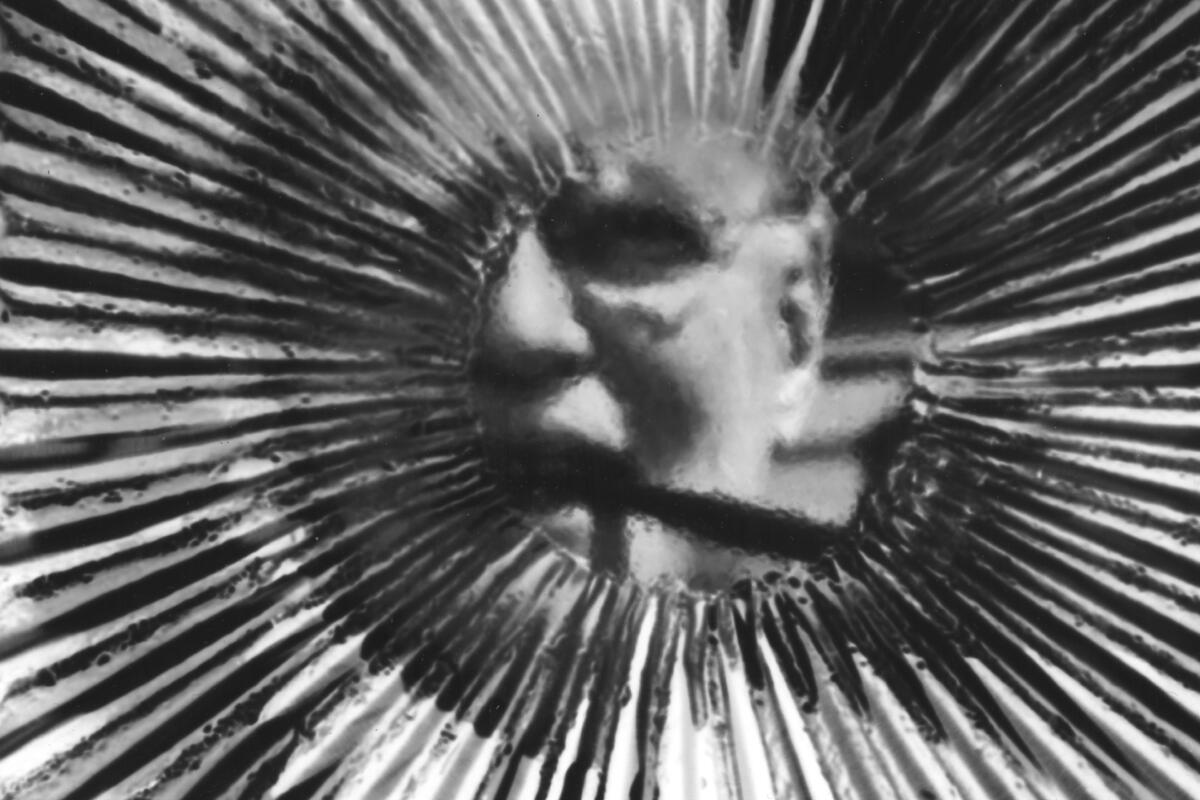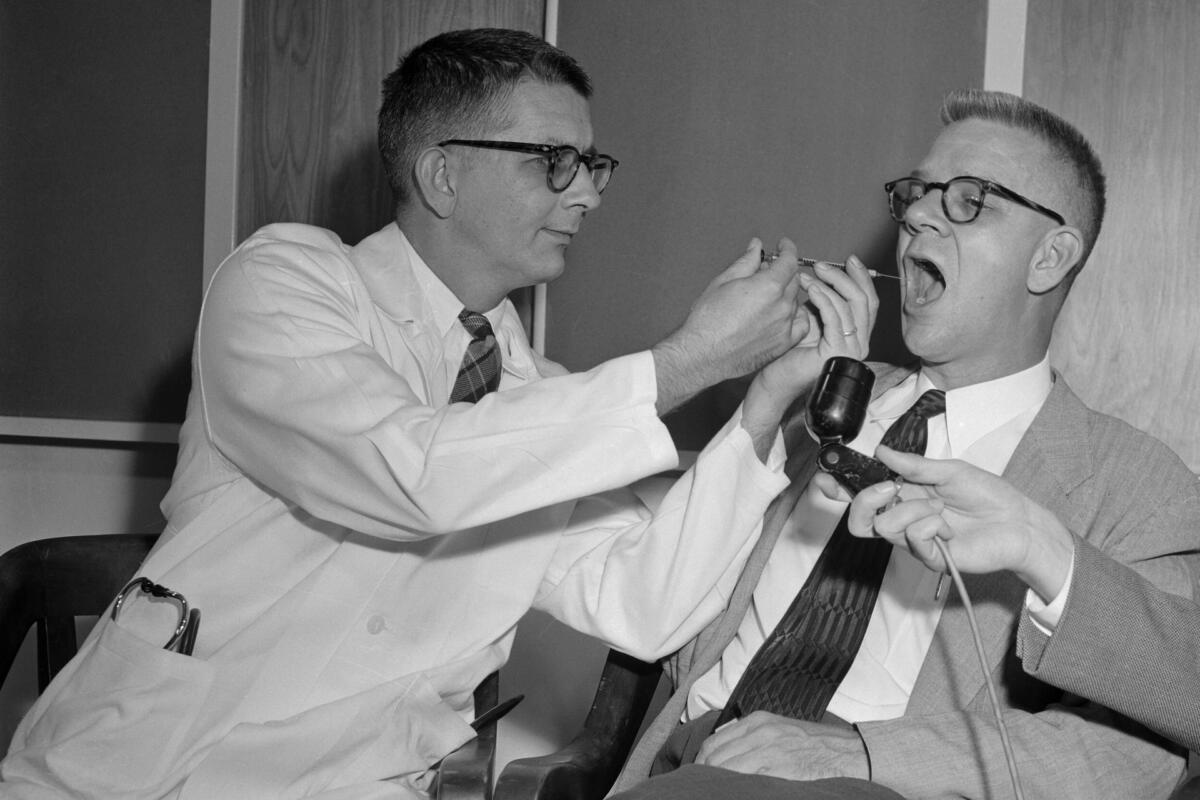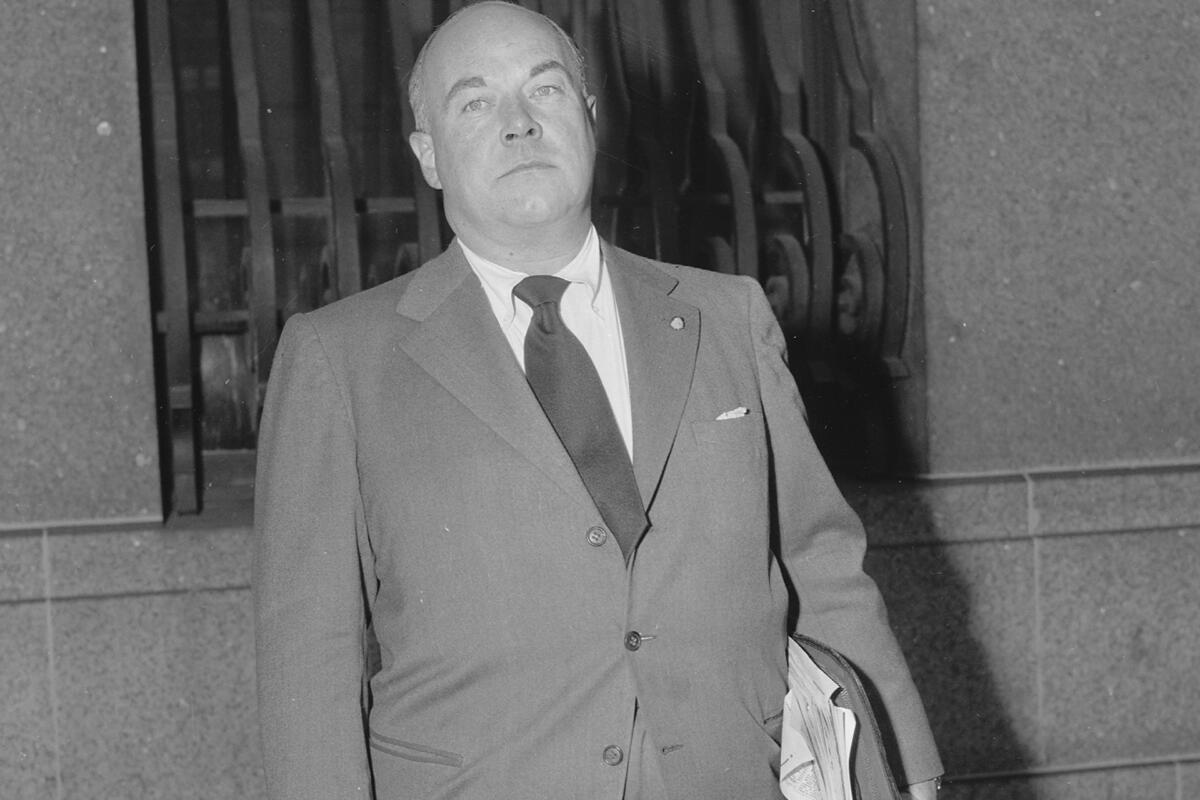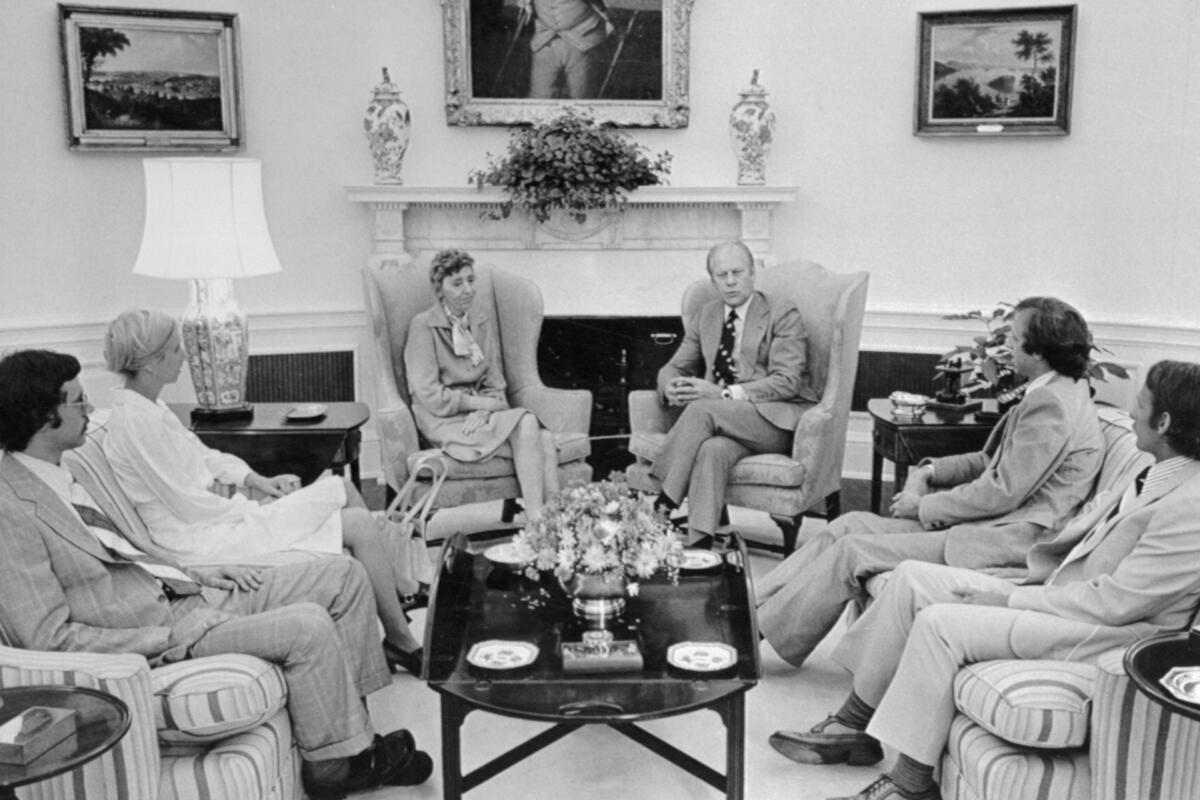On April 10, 1953, Allen Dulles, the newly appointed director of the CIA, delivered a speech to a gathering of Princeton alumni. Though the event was mundane, global tensions were running high. The Korean War was coming to an end, and earlier that week, The New York Times had published a startling story asserting that American POWs returning from the country may have been “converted” by “Communist brain-washers.”
Some GI’s were confessing to war crimes, like carrying out germ warfare against the Communists–a charge the U.S. categorically denied. Others were reportedly so brainwashed that they had refused to return to the United States at all. As if that weren’t enough, the U.S. was weeks away from secretly sponsoring the overthrow of a democratically elected leader in Iran.
WATCH: Full episodes of America's Book of Secrets online now.
Dulles had just become the first civilian director of an agency growing more powerful by the day, and the speech provided an early glimpse into his priorities for the CIA. “In the past few years we have become accustomed to hearing much about the battle for men’s minds–the war of ideologies,” he told the attendees. “I wonder, however, whether we clearly perceive the magnitude of the problem, whether we realize how sinister the battle for men’s minds has become in Soviet hands,” he continued. “We might call it, in its new form, ‘brain warfare.’”
Dulles proceeded to describe the “Soviet brain perversion techniques” as effective, but “abhorrent” and “nefarious.” He gestured to the American POWs returning from Korea, shells of the men they once were, parroting the Communist propaganda they had heard cycled for weeks on end. He expressed fears and uncertainty–were they using chemical agents? Hypnosis? Something else entirely? “We in the West,” the CIA Director conceded, “are somewhat handicapped in brain warfare.” This sort of non-consensual experiment, even on one’s enemies, was antithetical to American values, Dulles insisted, as well as antithetical to what should be human values.
Fear of brainwashing and a new breed of “brain warfare” terrified and fascinated the American public throughout the 1950s, spurred both by the words of the CIA and the stories of “brainwashed” G.I.’s returning from China, Korea, and the Soviet Union. Newspaper headlines like “New Evils Seen in Brainwashing” and “Brainwashing vs. Western Psychiatry” offered sensational accounts of new mind-control techniques and technologies that no man could fully resist. The paranoia began to drift into American culture, with books like The Manchurian Candidate and The Naked Lunch playing on themes of unhinged scientists and vast political conspiracies.
The idea of brainwashing also provided many Americans with a compelling, almost comforting, explanation for communism’s swift rise–that Soviets used the tools of brainwashing not just on enemy combatants, but on their own people. Why else would so many countries be embracing such an obviously backward ideology? American freedom of the mind versus Soviet “mind control” became a dividing line as stark as the Iron Curtain.
MK-Ultra
Three days after his speech decrying Soviet tactics, Dulles approved the beginning of MK-Ultra, a top-secret CIA program for “covert use of biological and chemical materials.” “American values” made for good rhetoric, but Dulles had far grander plans for the agency’s Cold War agenda.
MK-Ultra’s “mind control” experiments generally centered around behavior modification via electro-shock therapy, hypnosis, polygraphs, radiation, and a variety of drugs, toxins, and chemicals. These experiments relied on a range of test subjects: some who freely volunteered, some who volunteered under coercion, and some who had absolutely no idea they were involved in a sweeping defense research program. From mentally-impaired boys at a state school, to American soldiers, to “sexual psychopaths” at a state hospital, MK-Ultra’s programs often preyed on the most vulnerable members of society. The CIA considered prisoners especially good subjects, as they were willing to give consent in exchange for extra recreation time or commuted sentences.
Whitey Bulger, a former organized crime boss, wrote of his experience as an inmate test subject in MK-Ultra. “Eight convicts in a panic and paranoid state,” Bulger said of the 1957 tests at the Atlanta penitentiary where he was serving time. “Total loss of appetite. Hallucinating. The room would change shape. Hours of paranoia and feeling violent. We experienced horrible periods of living nightmares and even blood coming out of the walls. Guys turning to skeletons in front of me. I saw a camera change into the head of a dog. I felt like I was going insane.”
Bulger claimed he had been injected with LSD. Lysergic acid diethylamide, or acid, had become one of the CIA’s key interests for its “brain warfare” program, as the agency theorized it could be useful in interrogations. In the late 1940s, the CIA received reports that the Soviet Union had engaged in “intensive efforts to produce LSD,” and that the Soviets had attempted to purchase the world’s supply of the chemical. One CIA officer described the agency as “literally terrified” of the Soviets’ LSD program, largely because of the lack of knowledge about the drug in the United States. “[This] was the one material that we had ever been able to locate that really had potential fantastic possibilities if used wrongly,” the officer testified.
With the advent of MK-Ultra, the government’s interest in LSD shifted from a defensive to an offensive orientation. Agency officials noted that LSD could be potentially useful in “[gaining] control of bodies whether they were willing or not.” The CIA envisioned applications that ranged from removing people from Europe in the case of a Soviet attack to enabling assassinations of enemy leaders. On November 18, 1953, a group of ten scientists met at a cabin located deep in the forests of Maryland. After extended discussions, the participants agreed that to truly understand the value of the drug, “an unwitting experiment would be desirable.”
The CIA remained keenly aware of how the public would react to any discovery of MK-Ultra; even if they believed these programs to be essential to national security, they must remain a tightly guarded secret. How would the CIA possibly explain dosing unassuming Americans with LSD? “Precautions must be taken not only to protect operations from exposure to enemy forces but also to conceal these activities from the American public in general,” wrote the CIA’s Inspector General in 1957. “The knowledge that the Agency is engaging in unethical and illicit activities would have serious repercussions in political and diplomatic circles and would be detrimental to the accomplishment of its mission.”
Operation Midnight Climax
The CIA’s initial experiments with LSD were fairly simple, if shockingly unethical. The agency generally dosed single targets, finding volunteers when they could, sometimes slipping the drug into the drinks of fellow CIA employees. Over time these LSD experiments grew increasingly elaborate. Perhaps the most notorious of these projects was Operation Midnight Climax.
In 1955, on 225 Chestnut Street, San Francisco, the CIA was devoting substantial attention to decorating a bedroom. George White oversaw the interior renovations. Not much of a decorator, White had a storied career in the Federal Bureau of Narcotics. When the CIA moved into drug experiments, bringing White on board became a top priority.
White hung up pictures of French can-can dancers and flowers. He draped lush red bedroom curtains over the windows. He framed a series of Toulouse-Lautrec posters with black silk mats. For a middle-aged drug bureaucrat, each item evoked sex and glamour.
George White wasn’t building a normal bedroom, he was building a trap.
White then hired a Berkeley engineering student to install bugging equipment and a two-way mirror. White sat behind the mirror, martini in hand, and waited for the action to begin. Prostitutes would lure unsuspecting johns to the bedroom, where the men would be dosed with LSD and their actions observed by White from beyond the mirror. As payment for their services the sex workers receive small amounts of cash, as well as a guarantee from White that he’d intercede when the women inevitably had run-ins with law enforcement in the future.
Though the CIA piloted these safe houses as a stage for testing the effects of LSD, White’s interest shifted to another element of his observations: the sex. The San Francisco house became the center of what one writer called “the CIA carnal operations,” as officials began asking new questions about how to work with prostitutes, how they could be trained, and how they would handle state secrets. The agency also analyzed when in the course of a sexual encounter information could best be extracted from a source, eventually concluding that it was immediately after sex.
But perhaps unsurprisingly, much of White’s actions were driven by pure voyeurism: “I toiled wholeheartedly in the vineyards because it was fun, fun, fun,” White later said. “Where else could a red-blooded American boy lie, kill, cheat, steal, rape, and pillage with the sanction and blessing of the All-Highest?"
The Demise of MK-Ultra
The CIA’s experiments with LSD persisted until 1963 before coming to a fairly anticlimactic end. In the spring of 1963, John Vance, a member of the CIA Inspector General’s staff, learned about the project’s “surreptitious administration to unwitting nonvoluntary human subjects.” Though the MK-Ultra directors tried to convince the CIA’s independent audit board that the research should continue, the Inspector General insisted the agency follow new research ethics guidelines and bring all the programs on non-consenting volunteers to an end.
In 1977, Senator Edward Kennedy oversaw congressional hearings investigating the effects of MK-Ultra. Congress brought in a roster of ex-CIA employees for questioning, interrogating them about who oversaw these programs, how participants were identified, and if any of these programs had been continued. The Hearings turned over a number of disturbing details, particularly about the 1953 suicide of Dr. Frank Olson, an Army scientist who jumped out of a hotel window several days after unwittingly consuming a drink spiked with LSD. Amid growing criminalization of drug users, and just a few years after President Nixon declared drug abuse as “public enemy number one,” the ironies of the U.S.’s troubling experimentation with drugs appeared in sharp relief.
But throughout the hearings, Congress kept hitting roadblocks: CIA staffers claimed they “couldn’t remember” details about many of the human experimentation projects, or even the number of people involved. The obvious next step would be to consult the records, but that presented a small problem: in 1973, amid mounting inquiries, the director of MK-Ultra told workers “it would be a good idea if [the MK-Ultra] files were destroyed.” Citing vague concerns about the privacy and “embarrassment” of participants, the men who crafted MK-Ultra effectively eradicated the paper record for one of the United States’ most obviously illegal undertakings. A program born in secrecy would hold onto many of its secrets forever.








